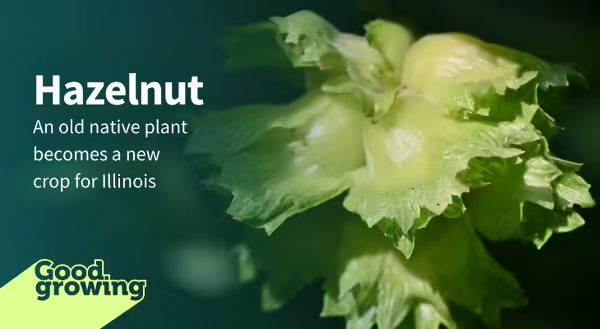
You’ve likely heard of hazelnuts, perhaps even used them in some delightful dessert or savory dishes and garnishes. If you give my children a choice between peanut butter or a chocolaty hazelnut spread, the peanut butter jar remains unopened. About 40 percent of global hazelnut production goes into making one product – Nutella.
European hazelnuts
Most hazelnut growing takes place in countries like Turkey, where they grow the European hazelnut, also known as European filbert (Corylus avellana). While the use of hazelnut is widespread in Europe, the European hazelnut is not very cold-hardy and must be grown in southern countries which include Italy and Azerbaijan.
American hazelnuts
What is the standing of hazelnut here in the United States? Well, it turns out most Americans are fonder of walnut and pecan. Is that because pecan and black walnut are native species? (Ignoring the fact the English walnut is native to Asia and Southern Europe.) Possibly, but one thing we are seeing is the growing popularity of hazelnut production in the US, specifically the Midwest.
But how can we grow a crop of European hazelnut in Illinois that is a southern species and will not tolerate our winters? Turns out we have a native hazelnut.
The American hazelnut (Corylus americana) grows wild throughout Illinois and produces an abundant, flavorful hazelnut. So why isn’t Illinois the hazelnut growing capital of the world? Well, it produces a far smaller nut. American hazelnut produces a thick shell containing a pea-sized nut. Compare that to nearly ping pong ball-sized European hazelnut and it becomes clear, it will take a lot more American hazelnuts to make up that difference.
Eastern Filbert Blight and hybrid hazelnuts
Another factor leading to the increase in popularity of growing hazelnuts in the Midwest is the European hazelnut has been devasted by a plant disease called Eastern Filbert Blight. This has led to the development of resistant varieties and also the hybridization of American and European hazelnuts that can grow in Illinois.
Before going out to the nearest nursery to buy yourself a hazelnut hybrid, keep in mind this is a new crop for the Midwest. Much of the research is still ongoing to develop varieties for our area that will yield a good amount of hazelnuts, while still maintaining healthy growth and disease resistance.
Cultivated types of hazelnut are just now starting to filter into the nursery industry. Two recent releases from Oregon State University and Rutgers are OSU 541.147 ‘The Beast’ and ‘Grand Traverse’. To find the most up-to-date hazelnut research and releases visit midwesthazelnuts.org.
How to grow hazelnuts in Illinois
So, what if you want to get into growing hazelnuts right away? You’re in luck! Seedlings of the American hazelnut are available from a lot of conservation groups, often for less than $1 a plant.
American hazelnut grows into a large shrub that sends out suckers from the root system. This makes American hazelnut a great hedgerow plant that supplies cover and food for wildlife, plus a good nesting location for some songbirds. Everything considered the American hazelnut has a high value to wildlife and deserves a bit more recognition in the Illinois landscape, let alone the added benefit for us humans to snag some handfuls of hazelnuts in the fall for our own confectionary delights.
Signup for our emails to get notified when new Good Growing posts are available.
MEET THE AUTHOR
Chris Enroth is a horticulture educator with University of Illinois Extension, serving Henderson, McDonough, Knox, and Warren counties since 2012. Chris provides horticulture programming with an emphasis on the home gardener, landscape maintenance personnel, and commercial landscapers. Additional responsibilities include coordinating local county Master Gardener and Master Naturalist volunteers - providing their training, continuing education, advanced training, seasonal events, and organizing community outreach programs for horticulture and conservation assistance/education. In his spare time, Chris enjoys the outdoors, lounging in the garden among the flowers (weeds to most).